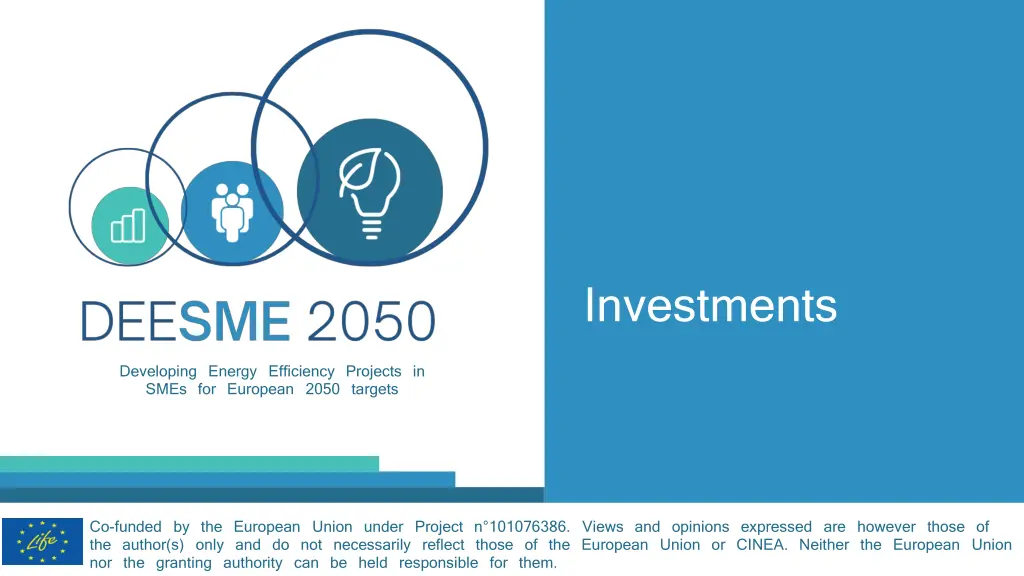
Energy Efficiency Investments in European SMEs - Bridging the Gap between Projects and Finance
Explore opportunities for energy efficiency investments in SMEs for European 2050 targets. Learn about common investment types, case studies in France, Poland, and Bulgaria, and challenges faced in implementing finance for such projects.
Uploaded on | 0 Views
Download Presentation

Please find below an Image/Link to download the presentation.
The content on the website is provided AS IS for your information and personal use only. It may not be sold, licensed, or shared on other websites without obtaining consent from the author. If you encounter any issues during the download, it is possible that the publisher has removed the file from their server.
You are allowed to download the files provided on this website for personal or commercial use, subject to the condition that they are used lawfully. All files are the property of their respective owners.
The content on the website is provided AS IS for your information and personal use only. It may not be sold, licensed, or shared on other websites without obtaining consent from the author.
E N D
Presentation Transcript
Investments Developing Energy Efficiency Projects in SMEs for European 2050 targets Co-funded by the European Union under Project n 101076386. Views and opinions expressed are however those of the author(s) only and do not necessarily reflect those of the European Union or CINEA. Neither the European Union nor the granting authority can be held responsible for them.
How to prepare prepared investments Two board meetings bridging SMEs and investors Identifying an investable pipeline of projects Which instruments and help is needed to implement finance?
Common investment types Case studies in France, Poland and Bulgaria. Common investment needs: Gas boiler replacement with heat pump Lighting Energy management systems Roof and wall insulation PV
Case study - FR Employees Turnover 57 10 M Location Near Annecy Building Value Proposition Tenant Interior design for the luxury sector Key Activities Design and furniture manufacture. Woodworking, metalworking and paint booth. Assembly and installation activities. Customers BtoB for boutiques (80%), luxury hotels, bank branches or head offices. Import share of exports to the USA Gas Bill Electricity Bill 20 000 /year (0,2% of the turnover) 22 000 /year (0,22% of the turnover)
Case study - PL Employees Turnover 21 2,5 M Location Limanowa, Poland Building Value Proposition Owner High quality, sophisticated products for demanding clients, niche products requiring specialised machines (such as CNCs) Key Activities Production of wooden furnitures and elements Customers Gas Bill Cheefly B2B 0 /year (0 % of the turnover) heated by the biomass boiler fed by wooden production leffovers 190 000 MWh, appr. 210 000 /year (2,4 % of the turnover) Electricity Bill
Common problems Few people work in the companies, < 20, who has the time, who takes ownership? Lack of knowledge about grants and regulations Indirect customers, they cannot pass on the costs Energy is a small % in the overall costs at times Not owning buildings, production is rented Investments are too small for ESCO and loans The tools like the Risk Assessment Tool partially address the challenges. But do not suffice to attract a bankable pipeline.
Thank you! Sissy Windisch Website: https://ieecp.org/projects/deesme2050/ LinkedIn: DEESME H2020 Twitter: @deesmeH2020 #DEESME2050
